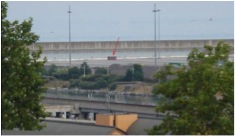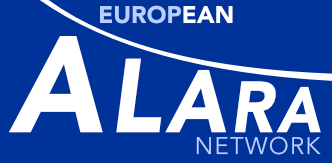Newsletter 28
- Details
L. Garbarino, M. Calimero
ARPAL, Environmental Protection Agency of Liguria - Italy
Description of the incident
In summer 2010 in the port of Genoa, routine radiation monitoring on incoming metallic objects detected an unexpected peak of gamma emissions coming from a container which had arrived from the United Arab Emirates. The radiation levels detected were significantly above background radiation levels. Immediately after the discovery, a Safety Plan was activated involving specialists from the Regional Environmental Agency (ARPAL) and fire fighters, with overall coordination of the plan by the Prefecture of Genoa. A precautionary no entry or exclusion zone was established at a distance of 200 m from the container; in spite of this, at the edge of the exclusion zone an environmental dose rate equivalent of 250 nSv/h could be measured, which is approximately four times higher than background levels. Measurements carried out on the container included gamma spectrometry, dose measurements and wipe testing, and the source of the radiation was identified as 60Co. Fortunately, no environmental contamination had occurred. At present, the container is still under judicial attachment.
The maximum values of environmental dose rate equivalent measured were:
- 36 mSv/h, at a distance of 0.1 m from one of the long sides of the container;
- 15 µSv/h, on the other long side of the container;
- 40 µSv/h and 75 µSv/h on the short sides of the container.

Photo 1. The container with the 60Co source on the wharf of the port of Genoa
Radiological Consequences
It is possible that workers on both ships and on the wharf may have been significantly exposed prior to the detection of the source. Hypothetical doses to these workers were estimated for a worst case scenario which assumed long exposure times, minimum distances between the container and the workers and no in-situ shielding between the source and the workers. The results of this assessment suggested that the maximum estimated effective dose to these workers would not have exceeded 1 mSv.
Lessons Learned
In order to avoid future exposure of workers to sources of ionising radiation from shipments of metallic materials, it would be advisable to:
- require sellers to provide certificates of the results of radiation monitoring of the containers;
- install radiation monitors on cranes, to provide for real time monitoring of containers during ship loading and unloading;
- provide the front line workers handing the containers with personal dosimeters.

